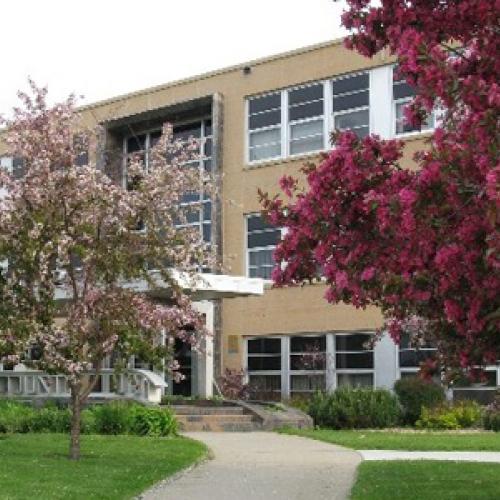To reduce energy use and save on utility bills in its municipal facilities, Itasca County entered into a performance contract with Energy Services Group in 2010. Part of that contract called for upgrading the energy management controls in the 115,000 square-foot Itasca County Courthouse.
You can learn about their many energy-saving projects in a case study from CERTs.
Implementation: The Courthouse energy management controls project included the following upgrades:
- Recommissioning the existing direct digital control (DDC) system and expanding that system to include additional portions of the heating, ventilating, and air conditioning system (see below for how a DDC system works)
- Reprogramming control loops
- Installation of wireless thermostats
- Recommissioning pneumatic controls
- Repairing or replacing valves on air handling units
The $312,000 energy management controls project was just one of several improvements made to the Courthouse as part of the performance contract. The Courthouse also received new air handlers, lighting upgrades, insulation, a new boiler, and more. The energy-saved outcomes reported below reflect the overall improvements to the Courthouse.
Outcomes—energy saved, CO2 reduced: Comparing the baseline year 2010, before the upgrades were finalized, to 2012, when the project was completed, Courthouse electric use decreased 25 percent, natural gas use was cut by 43 percent, and CO2 emissions were reduced by 30 percent. The savings are shown in the B3 Benchmarking charts below and represent an annual savings of $55,000 for this one building alone.
Annual natural gas consumption:

Figure 1. This Minnesota B3 Benchmarking chart shows 43 percent natural gas savings for the Courthouse.
Annual electric consumption:

Figure 2. Electric use decreased by 25 percent from 2010 to 2012.
Annual CO2 emissions

Figure 3. CO2 emissions were reduced by 30 percent.
Documenting results: Itasca County is able to quantify its savings from the Minnesota B3 Benchmarking tool. Randy Washburn, Itasca County Facility Management supervisor, lauds the B3 tool, “because it is quick and easy to access the reports and use them when explaining our energy savings or giving a presentation,” he says. The Minnesota B3 Benchmarking tool is available for all state, local government, and public school buildings. To add your building to this database, go to the B3 website and click on “Contact Us.”
Funding: Nearly half the cost of the Courthouse energy management controls upgrades was funded by an Energy Efficiency and Conservation Block Grant from the Minnesota Department of Commerce and the U.S. Department of Energy. The grant was provided by the American Recovery and Reinvestment Act of 2009, the federal stimulus package designed to save energy and create jobs. Utility rebates helped fund the Courthouse upgrades and other projects in the performance contract. In all, the many Itasca County energy upgrades are expected to pay for themselves via energy savings in about 12 years.
Resources for local government projects: Itasca County worked with the local utilities and the Department of Commerce, Division of Energy Resources (DER) to help fund its projects. Since the Courthouse project was completed, the Department of Commerce launched in 2012 a Guaranteed Energy Savings Program (GESP) that can provide technical assistance to state agencies, local government units, school districts, and institutions of higher learning that are seeking energy performance contracts. Contact DER to discuss GESP and other energy savings programs that may be of help.
The U.S. Department of Energy’s Building Technologies Office also provides helpful resources for building retrofits, including The Advanced Energy Retrofit Guide for Office Buildings. For more on energy efficiency, including information on Minnesota’s B3 Benchmarking tool, contact the DER Information Center.
A direct digital control: (DDC) system is often used to control the operation of heating, ventilating, and air conditioning (HVAC) equipment. These systems receive information from sensors throughout the building and provide appropriate instructions to control the HVAC equipment. These systems often have a graphical computer screen display which allows operators to remotely monitor and control HVAC equipment. The graphical display is also used to identify and correct HVAC problems.
View the original article on the MN Department of Commerce website.
About the Local Government Energy Action Series:
This year-long effort tells the stories of nearly 50 Minnesota municipalities, counties, and schools and the tangible results of their energy-saving efforts to inspire others to take their own actions.
Local Government Energy Action is brought to you by the Clean Energy Resource Teams (CERTs) in partnership with the Minnesota Department of Commerce, Division of Energy Resource


